Main menu
Common skin conditions

NEWS
Join DermNet PRO
Read more
Quick links
Authors: Dr Sarajane Ting, General Practitioner, Wellington, New Zealand; A/Prof Rosemary Nixon, Dermatologist, Melbourne, VIC, Australia. DermNet Editor in Chief: Adjunct A/Prof Amanda Oakley, Dermatologist, Hamilton, New Zealand. Copy edited by Gus Mitchell. February 2020.
Introduction Demographics Causes Clinical features Diagnosis Differential diagnoses Treatment Outcome
Hyperkeratotic palmar dermatitis is a form of eczema in which there is thick scaling on the palms. Hyperkeratotic palmar dermatitis occurs without any obvious co-existing skin disease [1,2].
Hyperkeratotic palmar dermatitis is also known as hyperkeratotic hand eczema, hyperkeratotic eczema of the palms, and psoriasiform hand/palmar eczema.
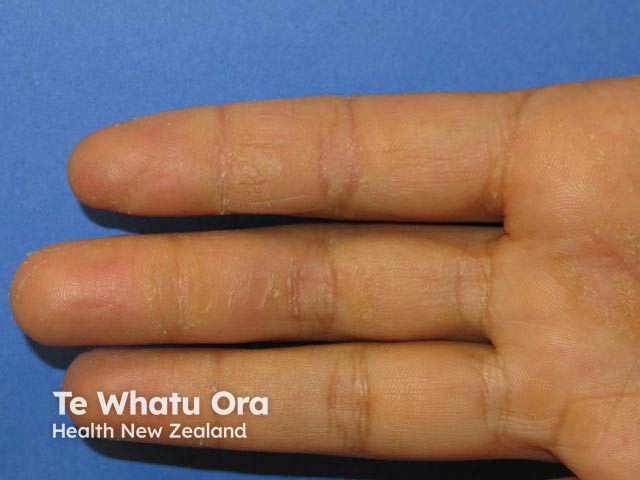

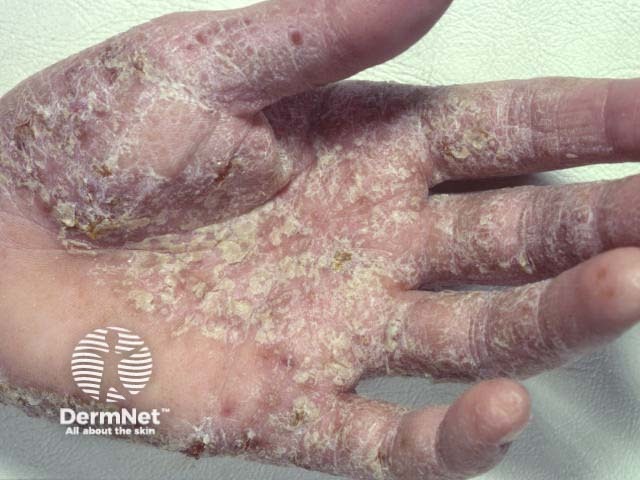
Hyperkeratotic palmar dermatitis occurs more commonly in men than in women [2,3]. The age of onset tends to be later than in other subtypes of hand eczema, most often occurring at middle age.
The cause of hyperkeratotic palmar dermatitis is unknown. It is classified as endogenous dermatitis [1–3]. Manual work is a risk factor for the development of hyperkeratotic palmar dermatitis, but patients do not generally report exposure to skin irritants or contact sensitisation [2,4,5].
Hyperkeratotic palmar dermatitis does not appear to be genetic in origin and there is no association with psoriasis or atopic dermatitis [1,5].
Hyperkeratotic palmar dermatitis typically presents as sharply demarcated, hyperkeratotic, and fissured lesions in the middles of both palms. It typically starts in one palm and progresses to involve the other palm and the volar surfaces of the fingers. Hyperkeratotic plantar dermatitis may occur in some cases [1–3].
Patients usually report itching. Fissures, if present, can be painful [1,3]. There are no vesicles or pustules. Nails are not affected [2,3].
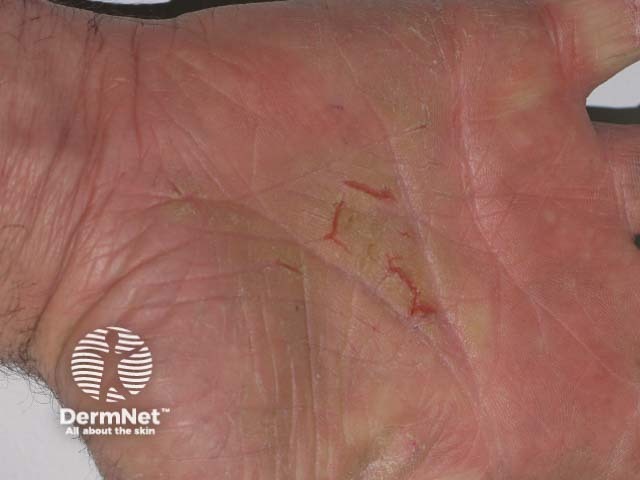
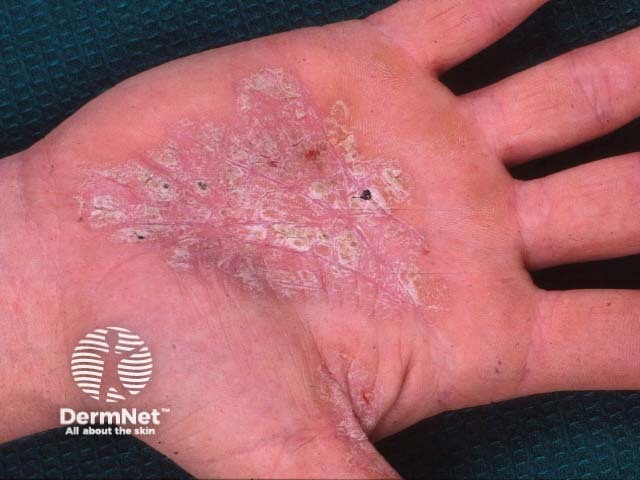
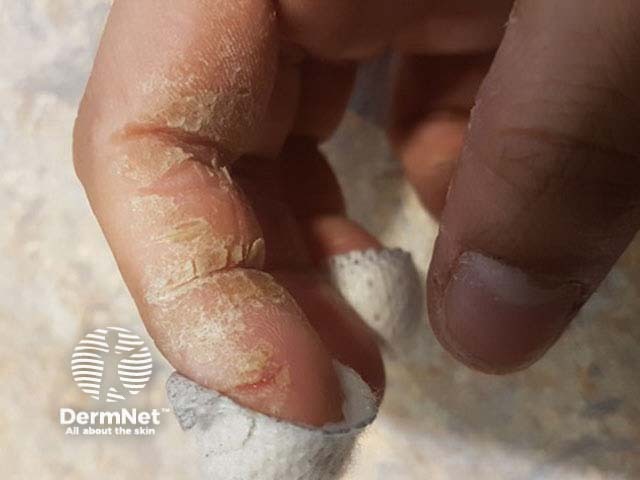
Hyperkeratotic palmar dermatitis is diagnosed clinically. The challenge is to distinguish between potential causes of palmar hyperkeratosis. Investigations may include:
Several skin conditions may be confused with hyperkeratotic palmar dermatitis.
Other conditions to consider include:
Compared to other subtypes of hand eczema, topical formulations are less effective in hyperkeratotic palmar dermatitis, resulting in a greater need for systemic treatment [11]. Acitretin has been found to be effective in the treatment of hyperkeratotic palmar dermatitis and often is useful at relatively low doses [12].
Topical treatment options for hyperkeratotic palmar dermatitis include:
Physical therapies for hyperkeratotic palmar dermatitis include:
Systemic therapies for hyperkeratotic palmar dermatitis include:
Hyperkeratotic palmar dermatitis tends to follow a stable, chronic clinical course. Spontaneous resolution is uncommon [5]. Treatment with acitretin can result in a significant reduction in symptoms over a four-week treatment period [12,13]. This improvement has been shown to persist for five months after withdrawal of acitretin [13].